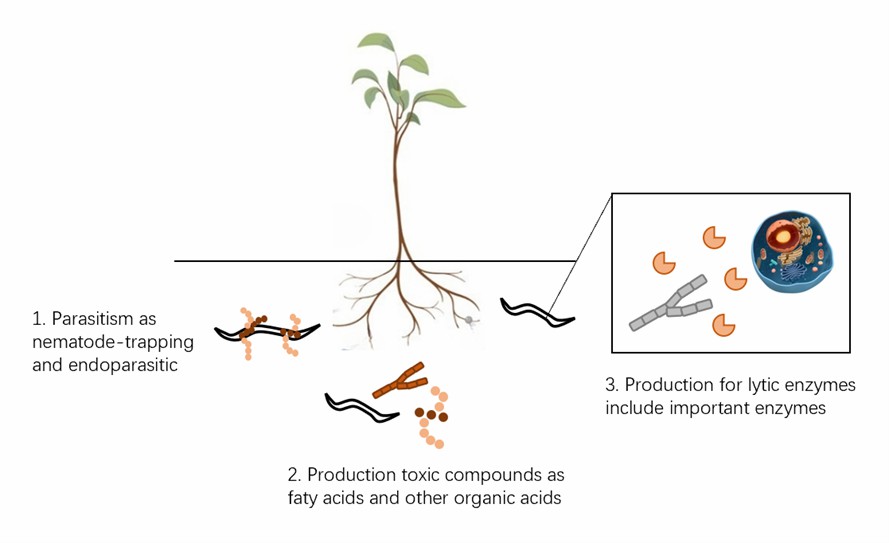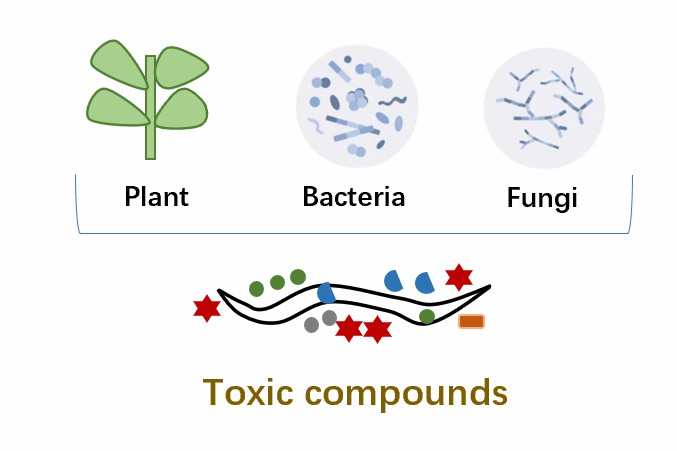All fungi capable of producing toxic nematode toxins are known as toxin-producing fungi; they are divided into two main categories, exclusively toxic and partly toxic. To date, nearly 230 metabolites active against nematodes have been isolated from more than 280 strains of 150 genera, including quinones, alkaloids, macrolides, terpenes, peptides, fatty acids, and furans produced by some of the fungal species of Basidiomycetes, Ascomycetes, and Hemiptera.
Lifeasible provides analysis services of fungi that poison plant nematodes to help our customers worldwide in the field of plant science. Our platform is equipped with cutting-edge facilities and professional experts to support research. Here, we provide various services according to customers' demands.
 Fig.1 The types of mechanisms used by fungi to infect nematodes.
Fig.1 The types of mechanisms used by fungi to infect nematodes.
 Fig.2 Attack by spores and various toxic and lethal metabolites released by fungi.
Fig.2 Attack by spores and various toxic and lethal metabolites released by fungi.
Lifeasible provides cost-effect, high-quality, and hassle-free services to our clients worldwide. We provide our clients with direct access to our experts and prompt responses to their inquiries. If you are interested in our services or have any questions, please feel free to contact us or make an online inquiry.
Lifeasible has established a one-stop service platform for plants. In addition to obtaining customized solutions for plant genetic engineering, customers can also conduct follow-up analysis and research on plants through our analysis platform. The analytical services we provide include but are not limited to the following:
Get Latest Lifeasible News and Updates Directly to Your Inbox
Adaptive Evolutionary Mechanism of Plants
February 28, 2025
Unraveling Cotton Development: Insights from Multi-Omics Studies
February 27, 2025